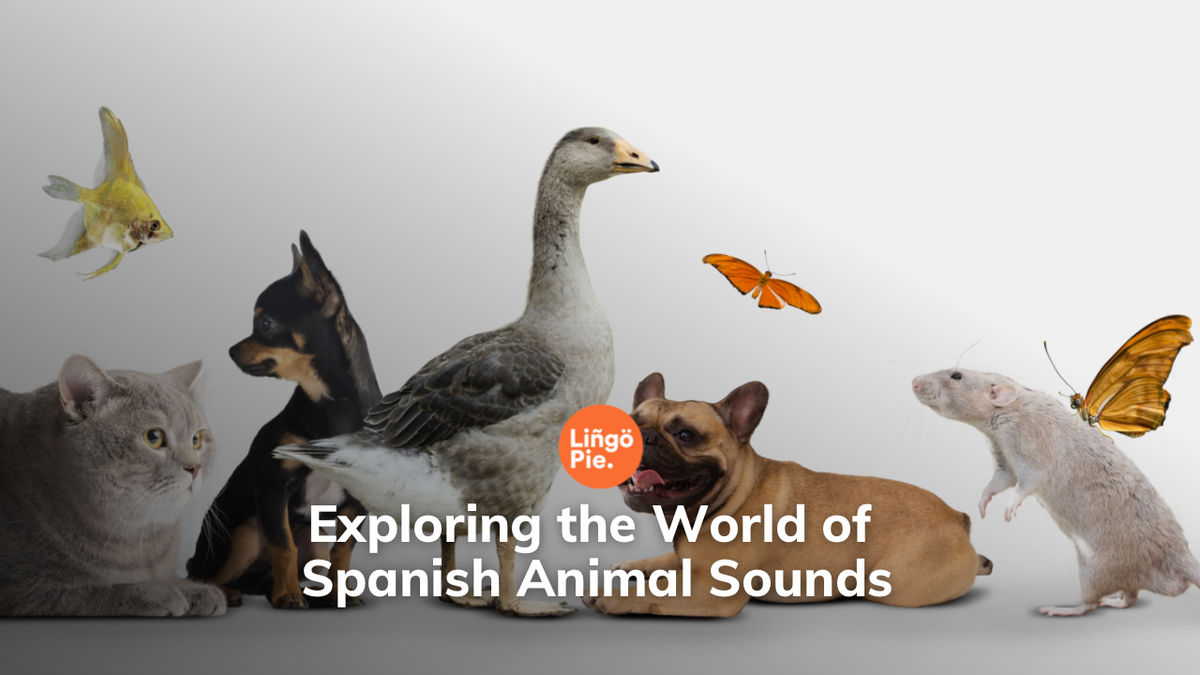The fascinating world of language not only reflects in the way humans communicate but also in how we interpret the sounds of nature. A particularly intriguing aspect is how different languages interpret animal sounds. In this article, we'll embark on an auditory journey to explore various Spanish animal sounds and how they differ from their English counterparts. Additionally, we'll discuss how Lingopie, an innovative language learning platform, can help you immerse yourself in the Spanish language, including the whimsical realm of animal onomatopoeias.

1. The Bark of a Dog: "Guau Guau" vs. "Woof Woof"
In English, we often describe a dog's bark as "woof woof," but in Spanish, it's "guau guau" (pronounced 'gwau gwau'). This distinct difference highlights the unique interpretation of sounds in different languages. When dogs bark in Spain or Latin America, people don't hear "woof"; they hear "guau." Such variations are not just fun to learn but also crucial in understanding the essence of a language.
2. The Meow of a Cat: "Miau" vs. "Meow"
Cats, with their universal appeal, maintain a relatively similar sound across languages. In Spanish, a cat's meow is represented as "miau" (pronounced 'mee-ow'), closely resembling the English "meow." This similarity offers a comforting sense of familiarity for English speakers delving into Spanish.
3. The Crow of a Rooster: "Quiquiriquí" vs. "Cock-a-doodle-doo"
One of the most striking differences in animal sounds between English and Spanish is the rooster's crow. In English, it's the iconic "cock-a-doodle-doo," but in Spanish, it transforms into "quiquiriquí" (pronounced 'kee-kee-ree-kee'). This sound is a vivid example of how languages creatively interpret the same noise.
4. The Oink of a Pig: "Oink Oink" vs. "Oinc Oinc"
Even the pigs speak differently in Spanish! While English speakers are familiar with "oink oink," Spanish speakers interpret this as "oinc oinc" (pronounced 'oynk oynk'). It's a subtle but amusing difference that highlights the nuances of language.
5. The Tweet of a Bird: "Pío Pío" vs. "Tweet Tweet"
The gentle sound of a bird chirping in Spanish is "pío pío" (pronounced 'pee-o pee-o'), differing from the English "tweet tweet." This example showcases how even delicate sounds are perceived differently across languages.
6. The Moo of a Cow: "Muu" vs. "Moo"
Some animal sounds are nearly universal. The sound of a cow in Spanish is "muu," remarkably similar to the English "moo." This commonality might be due to the deep, resonant nature of the sound that transcends language barriers.
7. The Hee-Haw of a Donkey: "Ioo Ioo" vs. "Hee-Haw"
Another interesting contrast is the sound of a donkey. In English, it's often written as "hee-haw," but in Spanish, it becomes "ioo ioo" (pronounced 'ee-o ee-o'). This change offers a glimpse into the distinct auditory perception in different cultures.
8. The Cluck of a Chicken: "Cocorocó" vs. "Cluck Cluck"
Lastly, the humble chicken has its unique Spanish sound – "cocorocó" (pronounced 'ko-ko-ro-ko'), compared to the English "cluck cluck." It's a playful interpretation that adds to the charm of Spanish animal sounds.
Learning with Lingopie
Now, how does one go about learning and experiencing these sounds in a natural setting? Here's where Lingopie comes in – an innovative language-learning platform that uses TV shows and movies to teach languages. With Lingopie, you're not just memorizing words; you're immersing yourself in the culture and everyday life of Spanish-speaking countries.
Lingopie offers a vast array of Spanish content, from cartoons featuring farm animals to documentaries about wildlife. As you watch these shows, you'll hear the animal sounds in context, making the learning process more engaging and memorable. Plus, with interactive subtitles, language learners can see the written form of these sounds, enhancing their reading skills.
Read Also:


Conclusion
Spanish animal sounds offer a delightful and educational aspect of language learning. They remind us that language is not just about words and grammar; it's about culture, perception, and the joy of discovery. By using platforms like Lingopie, language learners can dive deeper into the nuances of Spanish, experiencing not just the language but







![30+ Modern English Slang Terms For Money [Guide]](/blog/content/images/size/w300/2025/06/Slang-term-for-money.jpg)
![5 Official Spanish Language Tests To Show Your Proficiency Level [Guide]](/blog/content/images/size/w300/2025/06/Spanish-Language-Tests.jpg)

![Why Memorizing Spanish Words Won’t Make You Fluent [Tips]](/blog/content/images/size/w300/2025/06/how-to-practice-spanish-vocabulary.jpg)